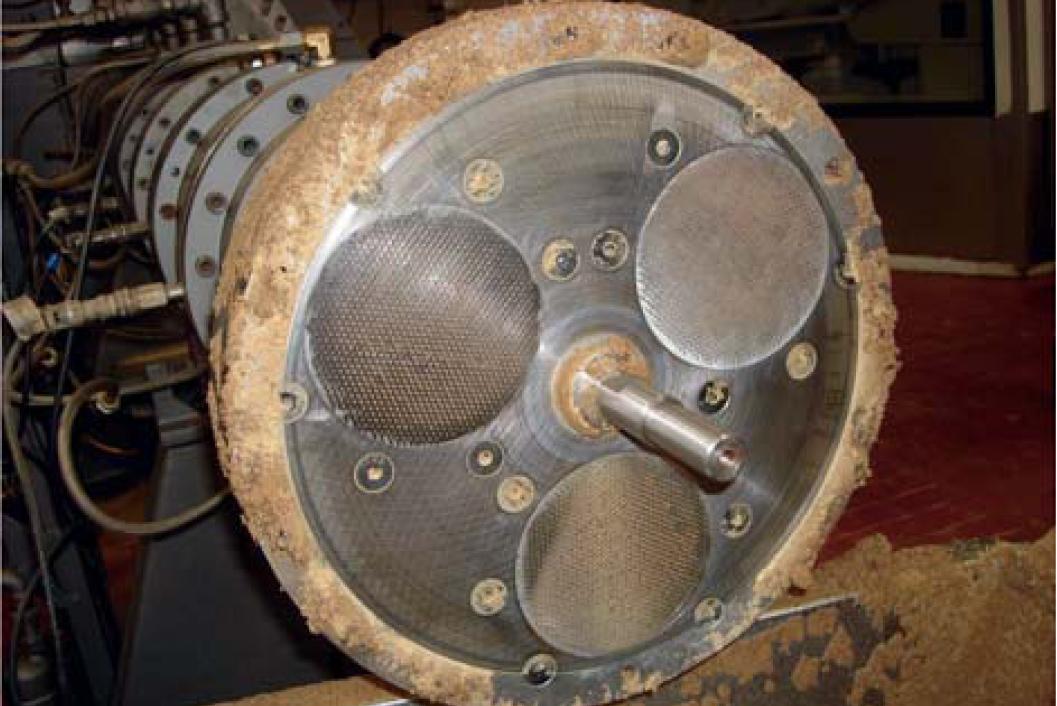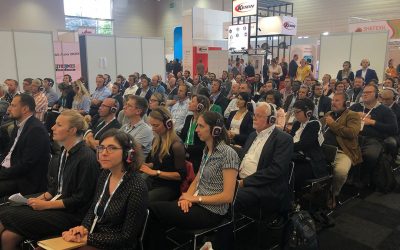Innovation in extrusion technology

To achieve growth on a continuous basis the extrusion industry has developed and improved some of the processing tools for the manufacture of feed. In this article a number of innovations and improvements will be discussed in detail.
For any extrusion manufacturing company to achieve growth on a continuous basis it has to add value to existing equipment and it is critical to develop and innovate new equipment. An extruder will last for more than 20 years if maintained properly. Therefore, most extrusion companies always look for new methods to improve the energy utilisation to reduce the footprint and improve the safety and quality of the feed.
Improvement in preconditioning
The preconditioner plays a very important role in processing feed via the extrusion process. In 1948, the first single shaft preconditioner was developed. The double conditioning cylinder came into the market in 1968, but it was still not providing enough retention time. In 1988, the differential diameter conditioner (DDC preconditioner) was the new innovation which could provide mixing as well as retention time. In 2008, the extrusion industry introduced the new high intensity preconditioner, which can provide mixing and retention time as well as proper sanitation.
What is the high intensity preconditioner? It has a number of features. Mixing intensity is controlled by speed and rotational direction of each shaft (individual VFD drives). An increased shaft speed increases radial and distributive mixing and the preconditioner has up to three times more beater contacts than the original DDC. The machine furthermore has an instant display of retention time and retention time can be varied. High intensity preconditioner provides several benefits for feed manufacturers. These include improved product hygiene; higher levels of liquids and slurries (increase mixing), reduced product waste at start up/shut down and ‘Flush’ and CIP modes.High intensity preconditioner (HIP) improves pasteurisation and sanitation:
- Increased mixing gives a more uniform product moisture and temperature,
- Slide gate reduces discharge of under-processed material,
- Slide gate becomes an integral part of sanitation process,
- Designed to reduce waste (under-processed product),
- Easy access for inspection and cleaning, and
- Designed to minimise leakage/spillage and exhaust streams.
Oblique tube die (OTD) and Diverging cone screw (DCS)
Old technology for products smaller than 3mm diameter has its limitations. The final die open area was the limiting factor in production capacity of micro-aquatic feeds and other products smaller than 3mm diameter. The flare-out adapters disrupted product flow on sinking products resulting in a non-uniform product. As a result the diverging screw with oblique diverging tubes was developed, which clearly benefited the manufacture of sinking products in aquaculture. This new design of oblique tube die is used for micro-aquatic feeds, shrimp food, starter
diets for poultry and swine – either dry or semi-moist feeds
with a diameter smaller than 3mm. The die hole population is almost three times that of a normal die. The small tube diameter gives uniform cross sectional flow at higher rates, with more size uniformity and greater product density and thus higher percentage of sinking. The pellets have increased water stability. This new design can increase capacity of a given extruder by 2-3 times where the die is a limiting factor or bottleneck. The long tubes increase cooking and decrease expansion through pressure drop and retention time. Some of this technology can be used on single or twin screw systems. Table 1 gives an idea of the improvements that are possible with this new technology.
Improvements in single screw design
Currently, new single screw extruders are available with all stainless steel construction without seams. These extruders have minimal surfaces for product accumulation. Designs of these extruders are made in a way that cleaning is very easy.
Improvements in thermal twin screw design
It takes a certain level of energy to create a given product via extrusion. Thermal and mechanical energy are the major sources of energy in the extrusion process. There are several effects which take place when we change the ratio of mechanical to thermal energy in the extrusion system. As a result product characteristics will be influenced, it determines utility costs/tonne and has impacts on wear costs/tonne and affects your “green” status. New thermal twin screw extruders with a high intensity preconditioner are now available which provide several features including; 25 L/D barrel length, unique screw profile, high capacity barrel steam injection, vent and mid barrel valve (as required) and hygienic frame.
Adjustable knife drive improvements
Recently, we have seen several new improvements in adjustable knife drive which includes the following:
- Knife drive is mounted to extruder
- Swings away for maintenance/tooling changes
- Improved clean-ability
- Blade position and spring force can be adjusted while running
- Digital readout for blade position to monitor blade displacement and wear
- Improved blade/die life
- Safer shaft/knife design
Improvements in control systems
There are several improvements in extrusion control systems. The latest addition in control systems is called E-Doc (Extrusion Dryer On-Line Communication System). This system provides continuous, on-line measurement, display, and control of energy efficiency, production rate, feed safety and quality assessment during the extrusion and drying process.
Single or twin screw research extruder
Now companies can buy the one laboratory extruder that can be switched to either single or twin screw configuration. This reduces the requirement for two separate installations. Common features, benefits and the value of this design are described in detail in Table 2 and 3.
The author can be reached for further information at mnriaz@tamu.edu. Information about extrusion programs can be found at http://foodprotein.tamu.edu/extrusion











